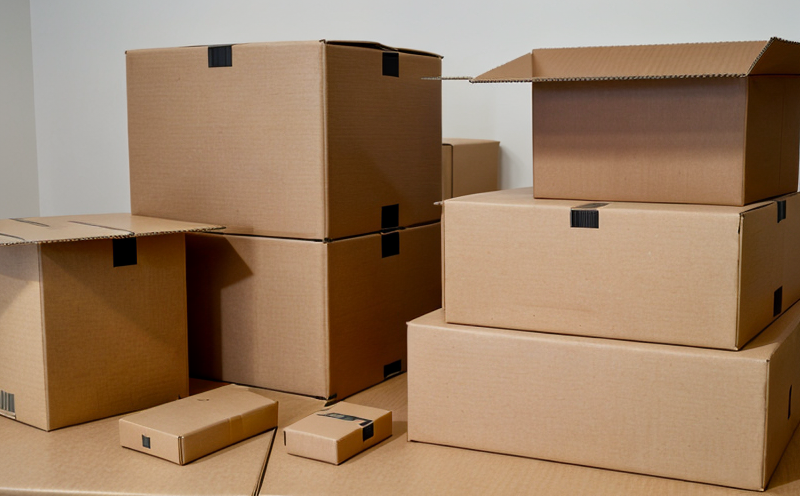ASTM B117 Corrosion Resistance Test for Metal Containers
The ASTM B117 standard is a widely recognized method used to evaluate the corrosion resistance of metal containers. This test, which simulates marine atmospheric exposure conditions, is particularly useful in industries that use metal packaging such as food and beverage, chemicals, pharmaceuticals, and electronics.
During this test, specimens are exposed to a neutral salt solution for an extended period under controlled environmental conditions. The primary objective of the ASTM B117 corrosion resistance test is to determine if the surface coating on metal containers can withstand harsh marine environments without significant degradation over time. This is crucial because even small breaches in the protective layer could lead to premature failure and contamination within the packaging.
The process begins with careful preparation of the specimens, ensuring they are representative of real-world conditions. The test setup includes a chamber where specimens are exposed continuously for 500 hours (21 days) or longer depending on the desired level of confidence in the results. Specimens may be single items like cans or multi-layered structures to mimic actual packaging configurations.
After exposure, thorough examination follows using visual inspection along with more advanced techniques such as ultrasonic testing and mass loss analysis to quantify any corrosion that has occurred. Results are then compared against specified criteria outlined in ASTM B117.
The ASTM B117 test is not only valuable for quality control but also aids manufacturers in selecting appropriate materials and coatings for their products, thereby enhancing product longevity and safety. Compliance with this standard ensures adherence to international best practices which can be advantageous when exporting goods internationally or meeting local regulations.
Scope and Methodology
The ASTM B117 Corrosion Resistance Test for Metal Containers evaluates the ability of metallic materials used in packaging to resist corrosion under marine atmospheric conditions. This method is applicable to various types of metal containers, including cans, drums, and aerosol containers.
| Key Parameters | Description |
|---|---|
| Test Specimens | Various metallic materials commonly used in packaging such as aluminum, steel, tinplate, etc. |
| Exposure Medium | A neutral salt solution (5% sodium chloride). |
| Environmental Conditions | Temperature: 23°C ± 2°C; Relative Humidity: ≥95% RH; Duration: Up to 168 hours. |
| Data Collection Methods | Visual inspection, mass loss measurements, and ultrasonic testing. |
The test involves placing specimens into a chamber filled with the neutral salt solution at specified conditions. Specimens remain in this environment for up to 168 hours before being removed for evaluation. During the evaluation phase, any visible changes due to corrosion are noted. Additionally, mass loss and ultrasonic testing provide quantitative data on the extent of corrosion.
Acceptance criteria dictate that no more than a certain percentage of specimens should exhibit signs of significant corrosion after exposure. Compliance with these standards ensures that containers meet industry requirements for durability and reliability in demanding environments.
Industry Applications
- Food and Beverage Industry: Ensuring the integrity of metal cans used to store perishable goods like fruits, vegetables, and beverages.
- Pharmaceuticals: Protecting vials and ampules containing liquid medications from degradation caused by moisture or rust formation.
- Chemicals: Evaluating drums and tanks that hold corrosive substances to prevent leaks leading to environmental hazards.
- Petroleum Products: Assessing the durability of metal containers used in oil refineries and storage facilities.
| Industry Applications | Benefits |
|---|---|
| Enhanced Product Safety | Avoids contamination from corrosion products which could harm consumers or workers handling the packaged goods. |
| Increased Shelf Life | Prolongs the usability of the container, reducing waste and associated costs. |
| Compliance with Regulations | Ensures adherence to international standards like ASTM B117, facilitating easier export and import processes. |
The ASTM B117 test plays a critical role in ensuring that metal containers used across diverse industries maintain their integrity under challenging environmental conditions. By adhering to this standard, manufacturers can ensure they are delivering products that meet both performance expectations and regulatory requirements.
Environmental and Sustainability Contributions
The ASTM B117 corrosion resistance test contributes significantly to environmental sustainability by promoting the use of durable materials in packaging. By ensuring that metal containers can withstand harsh marine environments without corroding, this test helps reduce waste generation associated with prematurely failed packaging.
Durable packaging reduces the frequency of replacements and refills, thus lowering overall resource consumption and energy expenditure involved in production processes. Moreover, by preventing leaks and spills from corrosive substances, it minimizes environmental pollution risks. This aligns closely with broader sustainability goals aimed at reducing waste streams and promoting recycling practices.
Furthermore, compliance with ASTM B117 not only enhances product quality but also supports responsible business practices that contribute positively to the environment. It fosters innovation in material science and engineering, leading to more efficient use of resources and reduced carbon footprints throughout supply chains.





